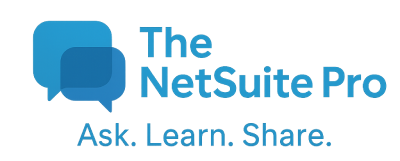Introduction
Over the past series of blogs, we explored every layer of building robust NetSuite integrations — from RESTlets and workflows to dashboards and automated fixes.
This final guide brings it all together into a structured, repeatable lifecycle — a roadmap for developing, deploying, and maintaining integrations at scale.
Whether you’re a NetSuite developer, consultant, or architect, mastering this lifecycle ensures every integration you build is secure, reliable, and continuously improving.
🔄 1. Overview: The 6 Stages of the Integration Lifecycle
| Stage | Description | Key Deliverables |
|---|---|---|
| 1️⃣ Discovery & Design | Understand requirements, data flow, and integration touchpoints. | System diagrams, mapping docs, API specs |
| 2️⃣ Development | Build RESTlets, SuiteScripts, or middleware flows. | Tested SuiteScript 2.1 code, API configs |
| 3️⃣ Testing & QA | Validate data, governance, and logic using automated scripts. | QA reports, pass/fail logs |
| 4️⃣ Deployment | Move scripts through sandbox → production using SDF/CI/CD. | Versioned deployment packages |
| 5️⃣ Monitoring & Alerting | Track integration health and errors. | Dashboards, Slack/email alerts |
| 6️⃣ Continuous Optimization | Analyze metrics and improve speed, reliability, and security. | KPI dashboards, updated scripts |
🧭 2. Phase 1: Discovery & Design
Before writing a single line of code, map the entire data flow:
- Identify source and destination systems (Shopify, Salesforce, 3PL, etc.)
- Define integration frequency (real-time vs batch).
- Determine authentication model (TBA, OAuth 2.0).
- Plan error handling, retry logic, and data retention.
✅ Deliverables:
- Data mapping table
- API spec
- Governance estimate
- Integration sequence diagram
⚙️ 3. Phase 2: Development
Core tools:
- SuiteScript 2.1 for custom APIs and automation.
- RESTlets / Map/Reduce / Suitelets for various use cases.
- Boomi / Celigo / MuleSoft for middleware orchestration.
✅ Best Practices:
- Use
submitFields()overrecord.load()where possible. - Add try/catch and detailed logging.
- Keep logic modular and version-controlled in SDF.
🧪 4. Phase 3: Testing & QA
Automate your validation using the framework from Blog 78:
- Validate record counts, totals, and statuses.
- Compare NetSuite vs external data daily.
- Log results in
customrecord_integration_qa_log.
✅ Output:
Automated QA summary → Email/Slack alert → Pass/Fail Dashboard
🚀 5. Phase 4: Deployment
Use SuiteCloud Development Framework (SDF) and CI/CD automation (Blog 71).
✅ Deployment Checklist:
- Sandbox validated ✔
suitecloud project:validatepassed ✔- GitHub/Azure deployment pipeline configured ✔
- Rollback branch ready ✔
Deploy with suitecloud project:deploy to production.
📊 6. Phase 5: Monitoring & Alerting
Combine your dashboards (Blog 74–76) and alert systems (Blog 75):
- Custom record logs (
customrecord_integration_log) - Suitelet dashboards with Chart.js
- Slack and email alerts for failures
✅ Goal: Instant visibility → Proactive action → Zero downtime
⚡ 7. Phase 6: Continuous Optimization
Use metrics to drive improvement:
- Track success rate, average processing time, and failure trends.
- Optimize scripts for fewer API calls (Blog 77).
- Automate data reconciliation (Blog 79).
- Apply auto-correction logic (Blog 80).
✅ Outcome:
A self-monitoring, self-healing integration ecosystem.
🧠 8. Integration KPI Examples
| Metric | Target | Notes |
|---|---|---|
| Success Rate | > 99% | Total successful integrations / Total runs |
| Avg Processing Time | < 10 min per batch | Depends on record volume |
| Error Response Time | < 30 min | Slack/email alert SLA |
| Reconciliation Accuracy | > 99.5% | Based on matched transactions |
| Governance Efficiency | < 50% usage | Average remaining units per run |
🧩 9. Example Architecture Summary
flowchart TD
A[External Systems] --> B[Middleware (Boomi/Celigo)]
B --> C[NetSuite RESTlet API Layer]
C --> D[Map/Reduce Processing]
D --> E[Integration Log & QA Framework]
E --> F[Monitoring Dashboard]
F --> G[Alert & Auto-Fix Automation]
G --> H[Continuous Feedback & Optimization]
✅ A full feedback loop — every issue is logged, alerted, fixed, and learned from.
🔐 10. Governance, Security & Compliance
- Use Token-Based Auth (TBA) or OAuth 2.0 only.
- Mask or omit sensitive data in logs.
- Audit changes via custom records.
- Archive historical data securely (SFTP or external storage).
📈 Continuous Improvement Framework
| Cycle | Activity | Example |
|---|---|---|
| Detect | Monitoring dashboard finds high failure rate | 3 Shopify orders failing daily |
| Diagnose | Review error logs | Invalid SKU |
| Fix | Auto-fix script corrects item mapping | Correct SKU linked |
| Validate | Re-run QA checks | Pass |
| Document | Update integration mapping | Git commit + wiki update |
✅ Final Deliverables of a Mature Integration Lifecycle
- ✅ Versioned SuiteScript repository
- ✅ Automated CI/CD pipeline
- ✅ Monitoring dashboard
- ✅ QA validation framework
- ✅ Reconciliation + auto-fix automation
- ✅ Continuous KPI tracking
Conclusion
The complete NetSuite Integration Lifecycle is a living ecosystem — designed, built, tested, deployed, monitored, and improved continuously.
Following this lifecycle transforms integrations from one-time projects into long-term, scalable business solutions that evolve with your systems.
When executed well, it ensures:
💡 Minimal downtime
⚙️ Predictable performance
🔒 Data accuracy
📊 Full visibility
🚀 Continuous improvement
Discover more from The NetSuite Pro
Subscribe to get the latest posts sent to your email.

Leave a Reply